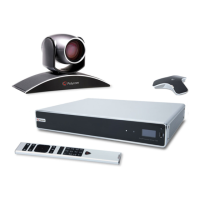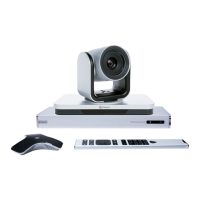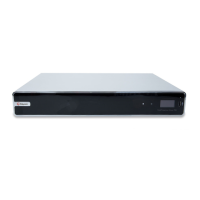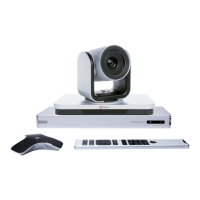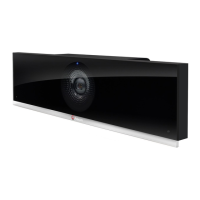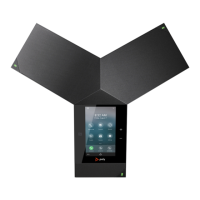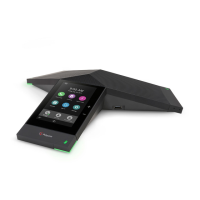Setting Description
Sign-in Address The SIP address or name of the system (for example,
mary.smith@department.company.com). If you
leave this blank, the system IP address is used for
authentication.
User Name The user name for authenticating your system with a
SIP registrar server (for example, marySmith). If the
SIP proxy requires authentication, you can’t leave the
user name and password blank.
Password The password associated with the user name for
authenticating your system with a SIP registrar server.
Registrar Server The IP address or FQDN of the SIP registrar server. If
you register a remote system with an edge server, use
that server’s FQDN.
By default, the system sends SIP signaling to ports
5060 (TCP) and 5061 (TLS) on the registrar server.
Enter the address and port using the following format:
<IP_Address>:<Port>.
The <IP_Address> can be an IPv4 or IPv6 address or
an FQDN (for example, servername.company.com:
6050).
Proxy Server The IP address or FQDN of the SIP proxy server. If you
leave this field blank, the system uses the registrar
server address. If you also leave the SIP registrar
server field blank, there is no SIP proxy server to
configure.
By default, the system sends SIP signaling to ports
5060 (TCP) and 5061 (TLS) on the proxy server.
The syntax for this setting is the same as the registrar
server.
Registrar Server Type Specifies the type of SIP registrar server you’re using.
If you have entered specific server addresses into the address fields Registrar server and Proxy server at
Admin Settings > Network > IP Network > SIP, before you change the SIP Server Configuration setting
from Specify to Auto, you must clear the address fields and then click Save. If the server fields are not
cleared, SIP registration might fail.
For more information about this and other Microsoft interoperability considerations, refer to the Polycom
Unified Communications for Microsoft Environments Solution Deployment Guide at Polycom Support.
Configuring SIP Settings for Integration with the Telepresence Interoperability
Protocol (TIP)
When SIP is enabled on a RealPresence Group Series system that has the TIP option key code, the
system can interoperate with TIP endpoints. You cannot configure TIP without purchasing and installing a
Telepresence Interoperability Protocol (TIP) option key code. For more information about Polycom
Configuring Network Settings
Polycom, Inc. 69
